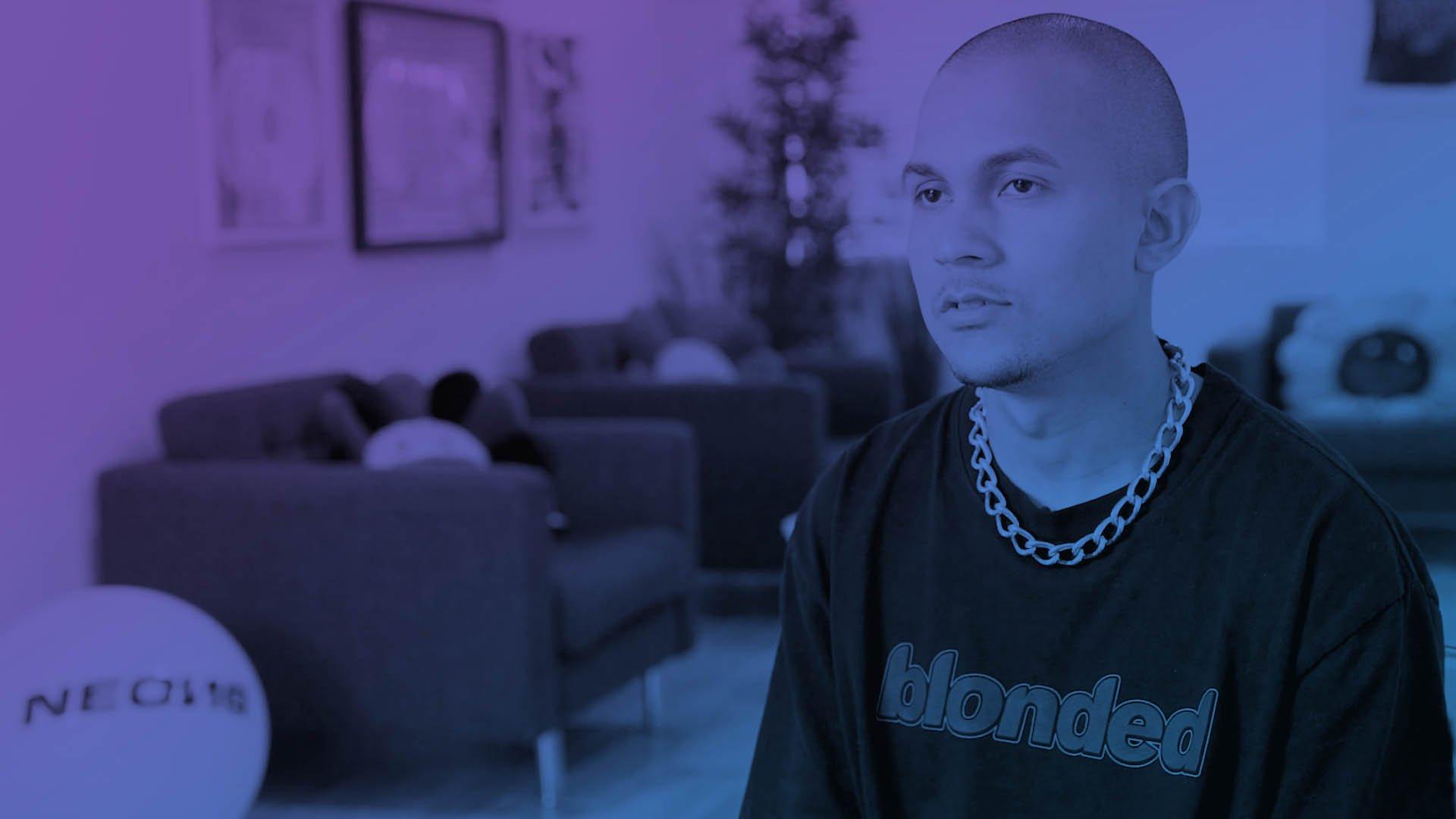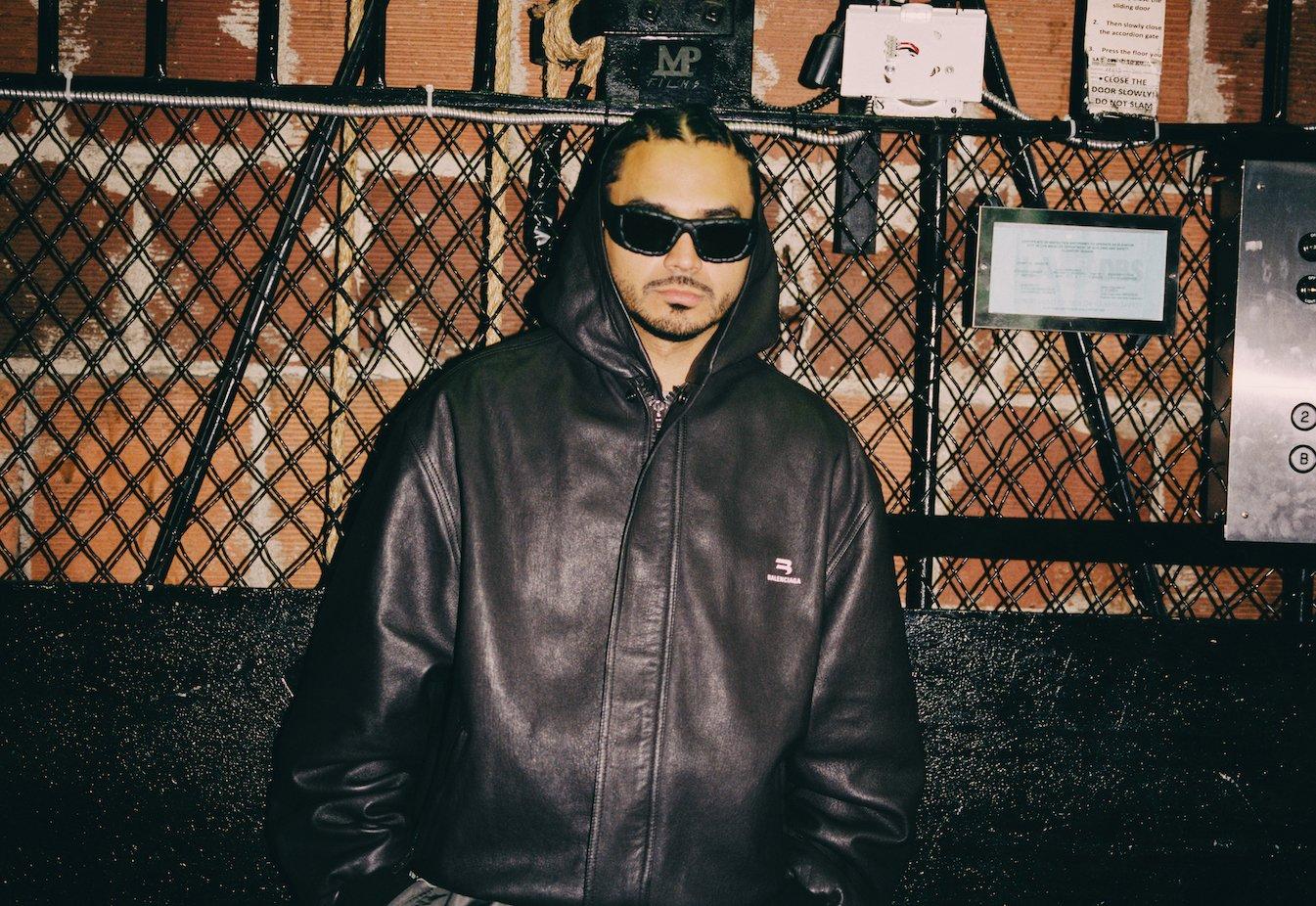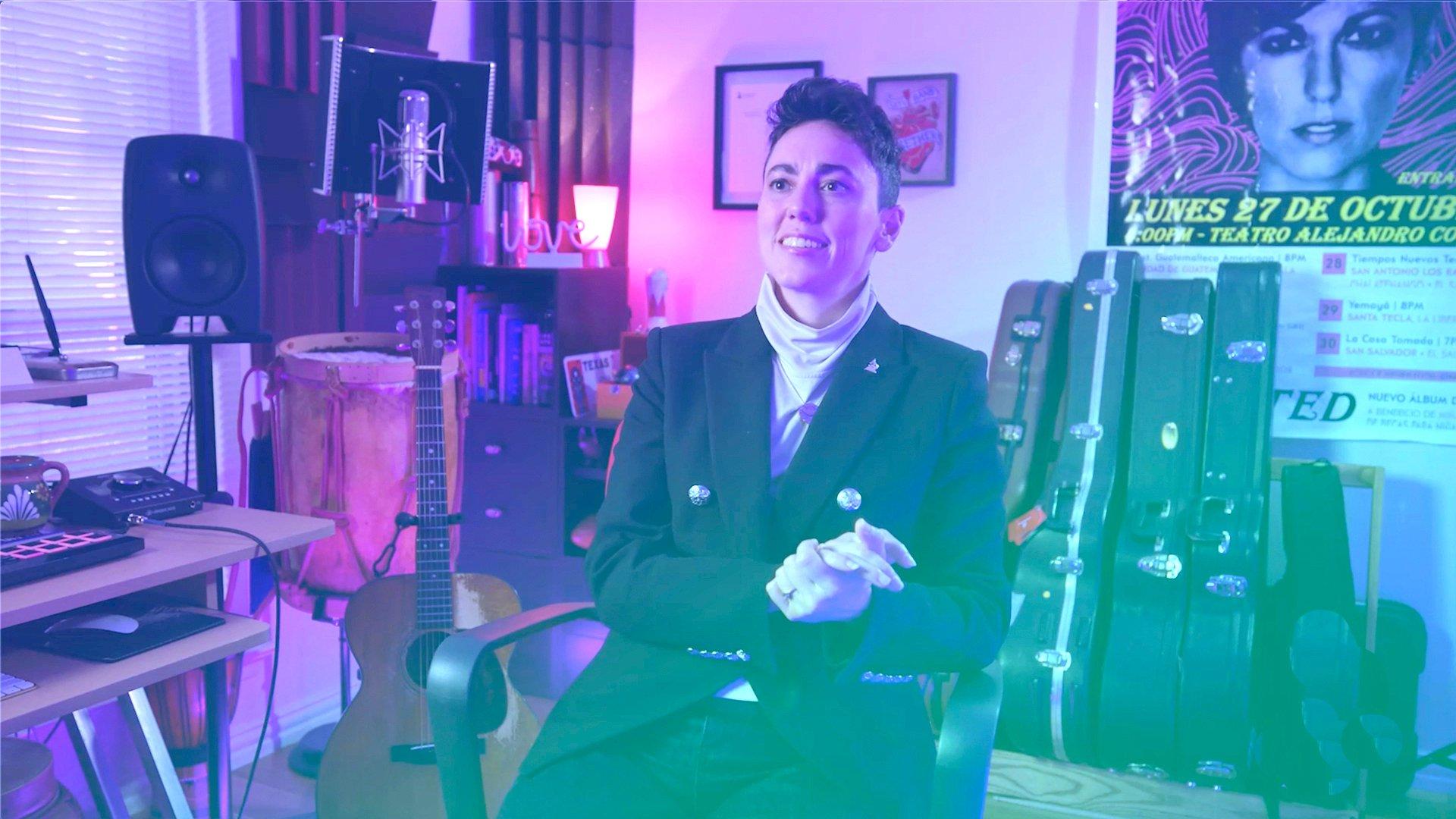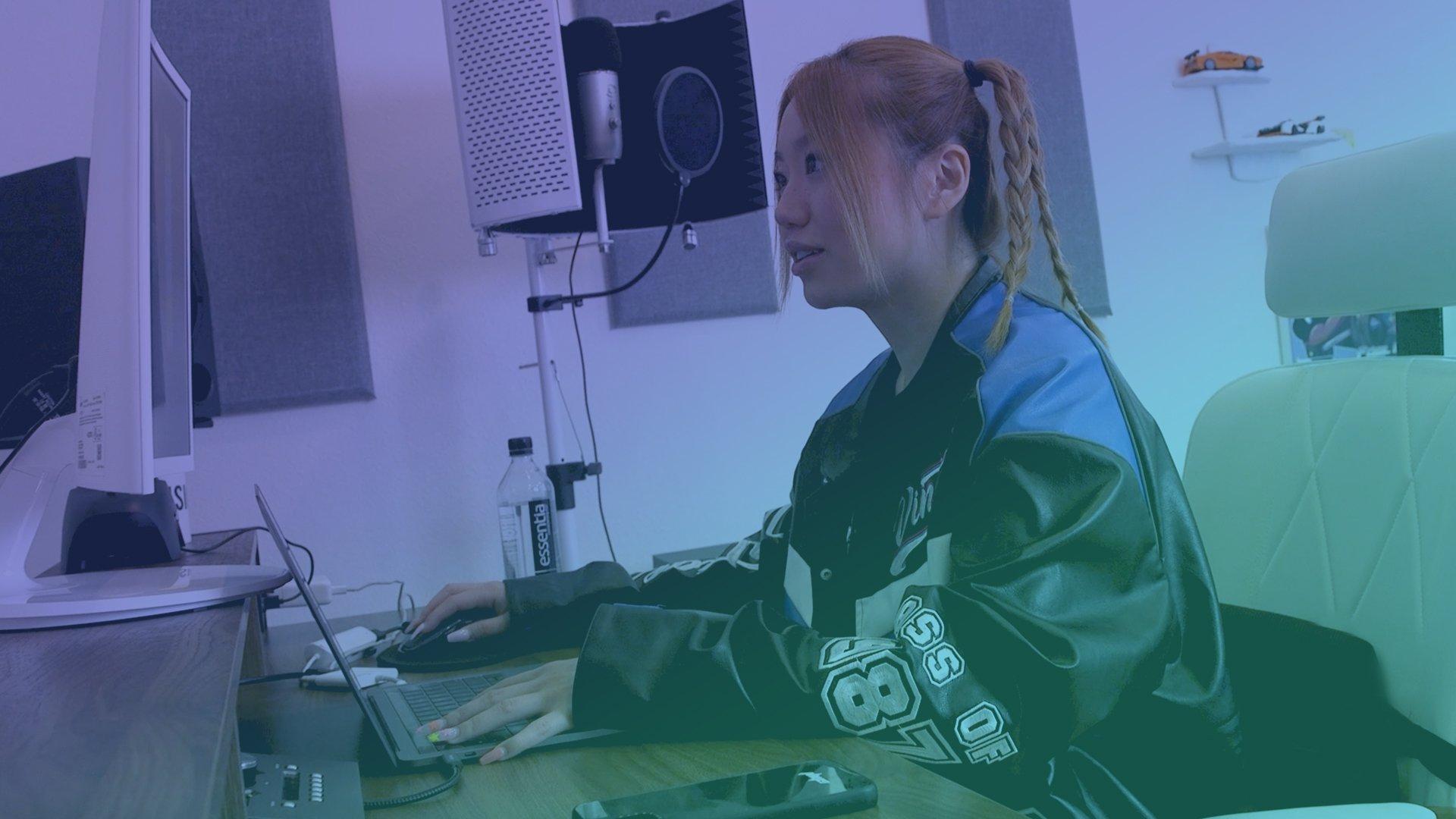Álvaro Díaz has a twinkle in his eye — he knows he’s onto something special.
"It’s crazy that it’s an alternative album, but also the most reggaeton I’ve ever made," Díaz says of his recently-released sophomore album, Sayonara. "It’s both worlds. I have my fingers crossed that people are going to love it."
Díaz, who is 28, has been making music since he was a teenager. A constant creative force, he grinded for years as an independent artist, building a solid fanbase in Puerto Rico before breaking into the wider Latin urbano scene with 2021 debut, Felicilandia, which layered fresh pop melodies onto playful reggaeton and trap beats, exploring the euphoria of love.
Notably darker and much more experimental than its predecessor, Sayonara marks the end of that "happyland" feeling.
"My story with ‘Felicilandia’ ended in heartbreak," he tells GRAMMY.com. "I was just writing about my life. It’s like a nightmare when you can’t stop thinking of that person. The usual Puerto Rican [reaction] to a breakup is like,'Don’t worry, let’s go to the streets!'"
The first half of the record soundtracks this feeling of party and abandon. Perreo tracks like the Feid-featuring dancefloor banger "Gatas Sandungueras Vol.1" nod to old school reggaeton, while Diaz and guest Tainy twist into ravey house beats on "Fatal Fantassy."
With an assist from Spanish indie pop star Sen Senra, "1000Canciones" marks a turning point in the album’s mood. It’s slow, reflective and poignant, with unashamedly heartfelt lyrics. "I went to the streets, and played 1000 songs that reminded me of you / even though I knew it was late / I took my phone to call you," Diaz sings in Spanish.
Lovingly nicknamed "Sadvarito"by fans, Diáz’s vulnerability stands out amidst a reggaeton scene dominated by party hits and swag. Even the biggest hits on Felicilandia— "Lori Party" and "Babysita </3" — were tinged with heartbreak; and fans will be reassured to see his signature fragility thoroughly embedded in Sayonara.
"It’s just how I feel, sometimes I feel empty, sometimes there’s a lot to say," Díaz says of the album’s changing moods.
At the end of the album, Díaz considers trying to get back with his former flame ("Quizás si, quizás no," featuring Quevedo). But, he soon realizes it won’t work: "You know it’s not the same — it’s just me saying 'Sayonara,'" he says.
GRAMMY.com spoke with Díaz over Zoom about why reggaeton is the perfect heartbreak genre and how ‘Sayonara’ is his most experimental work yet.
This interview has been edited for clarity and length.
Sayonara **comes three years after your debut, Felicilandia. There are some similarities in the two albums’ artwork, but we can see something’s gone a bit awry/**
There’s an explosion at the left of the Felicilandia artwork. We were predicting what was going to come. I’m a fan of when artists do these little things, merge album covers, or make songs that live in the same universe.
Felicilandia is the way to find happiness, Sayonara is saying goodbye to the happiness you thought you found.
When you’re with a person you create a world together. But, todo se fue a la mierda. That world has gone. On [the artwork for] Sayonara, I’m looking ahead, but you don’t know my intention. I could try to save everything, or I’m just taking the last look.
The track ‘‘Gatitas Sandungueras Vol. 1’ feat. Feid, has dark undertones, even though it’s a song about partying. How is the track related to the album’s main theme of overcoming heartbreak?
Me and Feid put everything into the song. It’s based on the story of missing her: you’re blind; you’re trying not to think about her.
Feid is like my duo, we always talk about making projects together, and our fanbase likes it when we work together. He couldn’t be out of ‘=Sayonara —he was in Felicilandia singing a sad song, and now he’s singing a party song, so it’s a total contrast.
Same with Rauw Alejandro, who is on the track "BYAK," and was also on Felicilandia single "Problemón." It’s special to have Feid and Rauw on both albums. We didn’t want to repeat what we did before, we wanted to go in another direction.
The album mixes a lot of different genres, but reggaeton is definitely at the foundation of Sayonara. What artists were your core inspirations?
The selection of the sounds, and the beats, reminds me of the golden era of reggaeton in the 2000s. We even used the old Fruity Loops software, and searched for inspiration in [LunyTunes & Tainy 2006 album] Mas Flow: Los Benjamins, or the [2003 compilation album], Blin Blin. All those albums that changed your life in Puerto Rico. That’s why the reggaeton tracks have 2000 vibes, it’s what I listen to.
You’re known for making an emotional brand of reggaeton. When did you first explore reggaeton’s potential to be more vulnerable?
My fans’ favorite songs are my most heartfelt songs. Maybe my most played song on Felicilandia is "Problemón," but on tour, the song people go crazy for is "Babysita." It’s a song I recorded in my house, but it’s bigger than all my other tracks.
So, I know how the people who follow me connect with me. The way I talk about heartbreak speaks to a lot of people; it’s more relatable than how other people sing about it. They call me "Sadvarito," so it was always a challenge to find a way to bring that Sadvarito energy to reggaeton.
What is your favorite reggaeton heartbreak song?
Damn, there’s a lot. It’s hard.
My favorite reggaetoneros growing up were Zion & Lennox, they were my GOATS, and most of their songs are heartbreak songs. So, Zion & Lennox, "Solo Una Noche."
There’s also a song on [Luny Tunes-produced 2005 compilation album] Mas Flow 2 which is my favorite ever: "Es Mejor Olvidarlo." That’s my jam. I used to blast that when I was little. I didn’t know heartbreak then, but I felt that.
So you can cry to reggaeton?
You definitely can! Old school people may say you can’t, but, ey, reggaeton be having feeling. It will make you feel a type of way in a club. It could change your mood completely.
Connecting with fans is everything to you. On Sayonara, how are you hoping to reach people?
I have a really hard time saying goodbye. There’s a phrase: la esperanza es lo último que se pierde, I’m one of those types of guys; the last one who loses hope even if my world is going to pieces. I want to make her fall in love, like on the track "Quien te quiere como el nene." It’s saying I really love you, I want to fix things.
The point of the album is for people to see what chapter they’re in. I’ve never been able to reach the last track, to finally be able to say Sayonara, but I know I will get there!
One woman who listened to the album said it’s awesome to hear a man’s perspective — you go out and party, and then you miss her. She said, usually, for girls, it’s the other way around: you miss him at the beginning, then you go out to party. It gives it realism, boys really be like that. I love it when real life and music come together. I really hope people find themselves in the songs.
"Quien te quiere como el nene" is one of the more experimental tracks on the album, and unexpectedly goes into a drum and bass rhythm. How did that come about?
I did that whole beat with my mouth! I had it in my mind. I had the bass, but it needed a sound there. I don’t know why but I started making these sounds. I sent a demo to Tainy and asked, "Do you think you can do this?" Obviously, he can, he’s Tainy. Alongside Manuel Lara, my main producer, they took it to the next level. They are a dream team.
You break from the reggaeton beat a lot in the album — "Fatal Fantassy" is very house. Tell us about these electro elements.
I like to experiment with different sounds. It’s harder for me to do reggaeton than do experimental things. Different tracks just come naturally. Tainy and I were listening to the album after we had 60 percent of it ready, and we felt like it was missing energy, it needed a bit more uptempo. So we did three sessions and came up with those ideas.
I made a playlist with everything I want to do in the album, so I could say "I want a riff like this." I like to take a lot of ideas and work them little by little. My process is different to a lot of my friends who go to the studio and make three or four songs a day. I really like to feel like what I’m creating.
You’re in Japan right now, and this album frequently mentions Japanese words, people and culture: from "Sayonara," "Kawa," "Majin Buu" and "Yoko." How did Japan influence you?
Japan is really important in this album, the names, the creation. I didn’t want it to be obvious, but it’s there, in the minimalism, the names, It’s magical for me to be now in Japan and listen to the album. I can say, damn this song feels like Toyko, this one feels like Osaka. Now I’m in Kyoto, and I feel "Quien te quiere como el nene" is definitely a song for this city.
I’m a cinematographic guy, I create songs with movies on mute. I recreate the vibe, how I feel it would sound. Even movies filmed in Japan, like ‘Lost in Translation’—I watched that a lot and was inspired by that. That feeling of being lost, of not knowing what’s next.
"Majin Buu" is one of the most heartfelt tracks on this album, and references a "Dragon Ball Z" villain. Why do you draw on that character?
It’s a 2024 alternative love poem! He’s a bad guy, but I flip and use it in a good way.
I like to play with names, most of the time I have the name of the song. I knew I wanted to make a song with Majin Buu but I didn’t know how it was going to sound. The same day I made "Majin Buu," I made the track "Yoko."
Speaking of "Yoko," do you relate to the person who has been painted as the bad guy?
Definitely. When I watched the Get Back documentary about the Beatles on Disney+, I remember seeing Yoko every single moment beside John Lennon. They were inseparable until his last day. All the Beatles had a family, they all had wives, but it was Yoko who was next to John at every moment.
It was a romantic way to say, I want you by my side like Yoko was with John Lennon.
You're very close to your fanbase. Is there anything that artists can do to stay grounded with their fans? As you’re getting bigger, how do you manage the relationship with fans?
Fans made me. Especially during those years when my project didn’t have the light it deserved, my fans were there for me. It’s important for me to have a healthy relationship with them.
I always try to put myself in the shoes of a 16-year-old and think what things could he say to me to make me fall in love with this project?, or what did this artist do that made me a superfan? I try to create experiences. In the run-up to releasing Sayonara, we did listening parties with 15 fans in different parts of the world, with exclusive merch. Seeing the reactions of the people is important for me.
I’ve been making music since 2012. Some [artists] don’t know the hustle; they get big after two to three years. But [success] is not given, it’s earned. I get the rockstar mentality, but that’s not me. It’s impossible for me to lose touch with the fans.
[Sayonara] is a celebration for me and for the fans. I want to do small shows in Puerto Rico, places I played when I was started. I love the shows where you can feel people’s emotions. When you get big, you kind of lose that. But to me, that connection is magical, I never want to lose that.
Kenia Os Unveils Her 'Pink Aura': How The Mexican Pop Star Let Her Feminine Energy Shine





